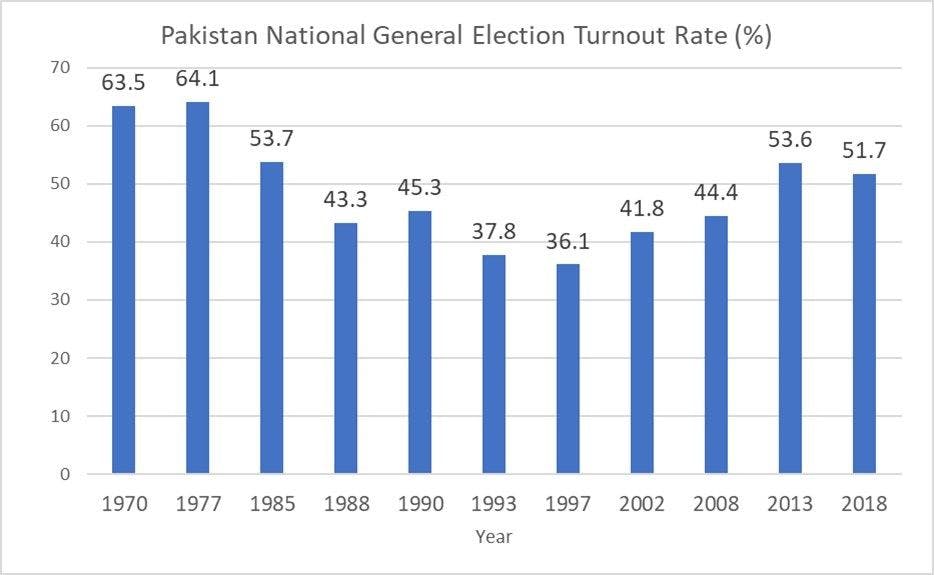By Haris Gazdar
February 15th, 2024
The proportion of registered voters who cast their votes - is often used as an indicator of the legitimacy of elections and democracy.
Changes in voter participation rates and trends among different demographic groups reflect the level of engagement of citizens in the domain of citizenship.
The turnout rate in Pakistan’s general elections declined from nearly two-thirds in the 1970s to around a third in 1997 (See table).
It then recovered steadily to over 50 per cent in the last the last two general elections (2013 and 2018).

Source: ECP, FAFEN
Fluctuations in the turnout rate over time may be indicative of political factors. The 1985 party-less elections were held by the Zia regime and boycotted by politicians belonging to opposition parties.
The lowest turnout elections (1997) were held after the dismissal of Benazir Bhutto’s second government - following a judicial crisis and the assassination of her brother Mir Murtaza Bhutto. It is widely thought that PPP voters stayed home, but there is also another story.
Some of the trends in the turnout rate in the 1980s and 1990s, and then in the last three elections are partly due to changes in the administration of electoral rolls and voter eligibility.
The 1988 post-Zia elections were the first ones when voters needed to bring their national identity cards. Under the Supreme Court’s directive this condition was not enforced strictly for women voters. From 1990 onwards enforcement was stricter.
NADRA issued Computerised National Identity Cards (CNICs) which became mandatory for voting in 2008. But 'non-verified voters' rolls inflated the denominator in 2008 - the real voter turnout rate would have been closer to 2013 when they were removed.
The Elections Act (2017) paved the way for a link between NADRA data and the electoral rolls. Any citizen with a CNIC was automatically registered as a voter, leading to a big jump in the number of registered voters in 2018.
In a nutshell, voter participation dropped under Zia, with moderate lift post-Musharraf. There are problems in comparability over time because of changes in electoral rolls.